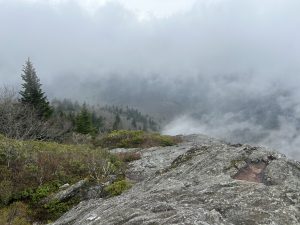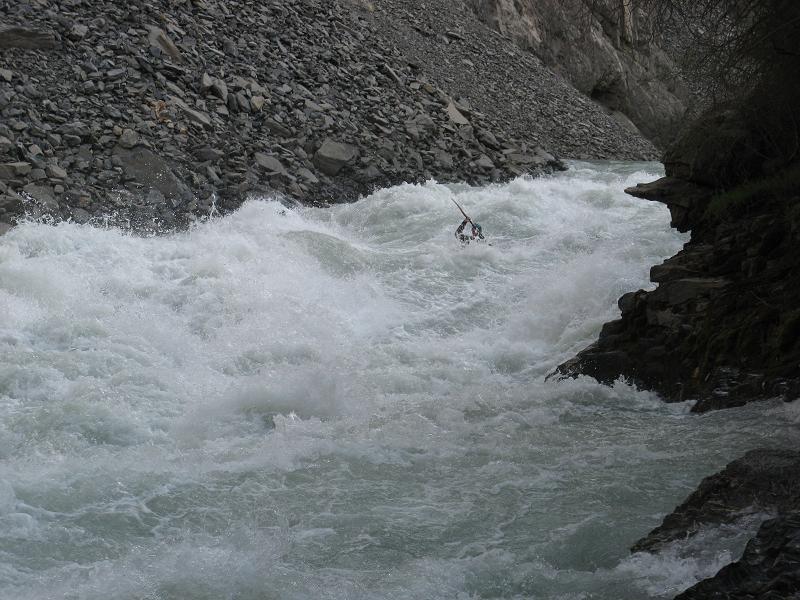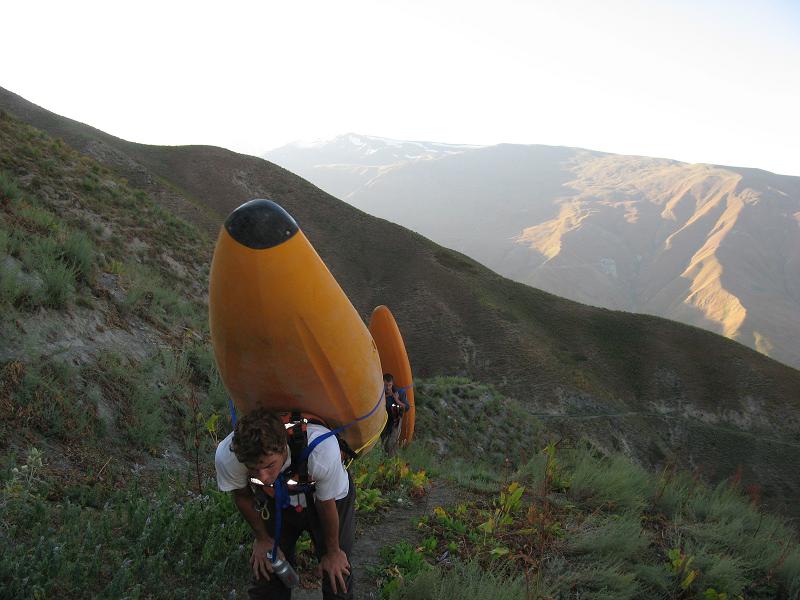
I grew up deep in the Blue Ridge Mountains. Rugged, worn, peaks tucked Sylva, North Carolina, into a high valley. Early morning fog blanketed the valley floor on my way to aptly named Smoky Mountain High. Ridges poked out of thick clouds and announced the day.
Easy river access, reliable flows, and a temperate climate made Sylva a burgeoning kayaker’s dream locale. But I was also a teenager. And Sylva left plenty to dream of for a bored, angsty 16-year- old.
The Cherokee Reservation neighbored Sylva to the west. Harrah’s Casino had yet to infuse millions into the local economy. While the casino’s effect on Cherokee is controversial, there is no question that it drastically changed life there. In the ’90s, main street was lined with trinket shops. Neighboring kiosks housed live bears in five square foot cages. Locals adorned in over-the-top headdresses watched over the bears. Many Cherokee teens fled the dilapidated local high school for Smoky Mountain High.
While there were plenty of upstanding Cherokee citizens, I gravitated towards juvenile delinquents, some of whom went to Smoky Mountain. Our mutual interests included cow tipping, fake IDs, and fire.
“East Side Sylva ain’t no joke,” we said. But when we couldn’t find weed there, we trekked to Cherokee in search of illicit substances. Our Cherokee friends were our shepherds, and while we never found ourselves in any serious trouble, I always felt like an intruder, a tourist, an outsider with no business there.
A few years later I found the Raven Fork, also deep in the Reservation. Champagne water tumbled from the highest peaks of the Great Smoky Mountains and over falls and slides straight out of a Tolkien story. We hiked to the put in on a green carpet of moss and ferns, and passed a cave that echoed the songs of the Raven Fork. The river cast a spell on me, and for a few years, I paddled it at every opportunity.
Manuel, a wizened Cherokee man as tough as beef jerky, shepherded my dirt bag friends and I, just as my high school buddies had a few years earlier. Large quantities of Budweiser were all he asked in return for the privilege of parking on his property and running the Raven Fork. Manny never seemed to mind our presence—if anything he enjoyed the company. I sometimes felt bad that I had to excuse myself early as he told one story after another.
But paddling the Raven Fork gave me the same edgy, out-of-place feeling that I had had a few years earlier. What right did I have to invade that sacred river, or the trailer parks of the Reservation?
The same feeling followed me on other kayaking adventures. Whether in isolated hollers in West Virginia, the wilds of Quebec, or First Nations lands in British Columbia, I wondered if I belonged, flitting through someone else’s home.
In 2007 Middy Tilghman, Andrew McEwan and Simon Beardmore explored the rivers and creeks of Tajikistan, home of the Pamir Mountains, second highest mountain range in the world. The Pamirs are dwarfed only by the Himalayas. Tajikistan is notorious in whitewater circles for hosting some of the most exposed whitewater on the planet. It is known for high altitude, box canyons, and glacial rivers
The Pamirs Expedition was not the team’s first trip together. They ran the Sary Jaz River in Kyrgyzstan, two years earlier. They were only in their early twenties, but pulled off a monumental feat as the first Western crew to run the river. The Sary Jaz is the whitewater equivalent to a major Himalayan climbing expedition, and it remains a pinnacle of big water, international, expedition paddling. Theirs may have been the first successful descent —two prior trips resulted in fatalities. But they got more than they bargained for after crossing the Chinese border. “Paddling into inescapable gorges became part of our routine. Spending eight days in Chinese custody, on the other hand, was anything but,” Middy wrote later. The formative experience molded them for the Tajikistan mission.
The team planned to spend a few months in Tajikistan, running large volume rivers and hiking up side creeks to bag first descents. They stayed for two years. They befriended local people, ate local food, spoke the local dialect, and ran the shit when they could. No longer tourists, they lived and worked in Tajikistan.
The threesome even started week-long summer camps for local kids from rural, poor, and conservative areas where they had paddled. The camps proved popular with everyone: kids, parents, educational institutions, and local governments. They expanded the program, and handed off to new directors. The camps lasted a decade before ultimately succumbing to political chaos.
It’s a striking story that speaks to the value of settling into a place to discover it. It’s a story of team work, friendship and grit. And it’s a story that Middy, Andrew and Simon will tell at Site Zed over the next few issues. Enjoy the first installment here.


Leave a Reply